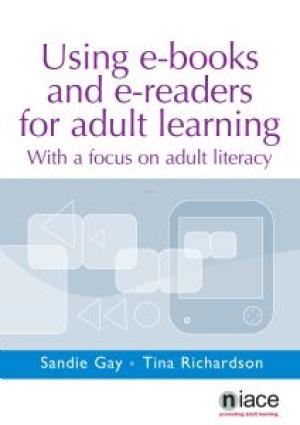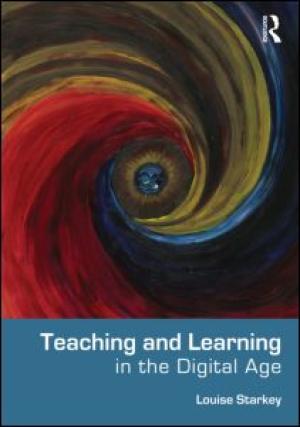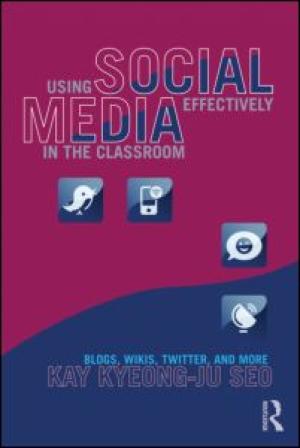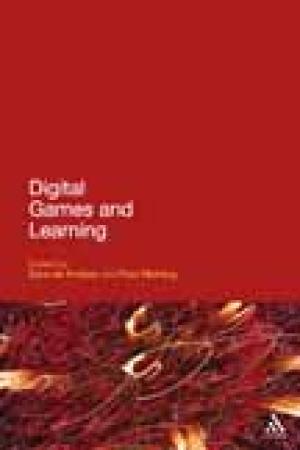Resources
An extended article describing the benefits and best practices of classroom technology use.
An online tutorial for using Power Point as a teaching tool.
Extensive page of tools, resources, and support for using new technologies in the classroom, from the University of Washington.
Brief analyses of why and how to use technology effectively when teaching large classes.
Teaching Learning, and Technology – a non-profit corporation that helps educational institutions make appropriate use of information technology through workshops, external evaluation, consulting, assessment tools, specialized tools and guides, institutional subscription programs, webcasts and online workshops, free resources and publications.

Click Here for Book Review Abstract: With e-books increasingly becoming an everyday and high-profile technology, how can they be used most effectively to help develop literacy skills, cultivate a love of reading, provide greater accessibility to texts for all, and offer portable access to a vast range of resources? Specifically written with the adult education sector in mind, this invaluable and straightforward guide will take the reader through the advantages and effective features that e-books have to offer. The text covers the necessities in e-book technologies: how to take advantage of the features that e-books offer adult learners * the options available, including dedicated e-readers, tablets, and smartphones * the costs * technical and management issues * real-world case studies of current uses and experiences in adult learning settings * current research and projects * pointers on the innovative uses of e-book technologies. The book also includes a chapter on useful links. It is a timely, original, and practical guide to a popular and increasingly accessible technology, with a specific focus on applications to adult learning. (From the Publisher.)
Twitter offers an engaging way to introduce students to reader-oriented interpretation of the Bible. The exercise described here introduces students to the idea that the reader has a role in the production of a text's meaning, which thus varies from reader to reader. Twitter enables us to capture the real-time thoughts of a variety of respondents to the text of Mark as it is read aloud. Students can concretely observe the effects of particular textual moments on individual respondents as well as analyze their general interpretive stances with regard to the text as a whole. Students come to grasp that the meaning of the text varies depending on the reader, setting the stage for more complex theoretical discussion of reader-response theory, the reader's role in the production of meaning, the adjudication of “allowed” and “disallowed” interpretations, and the appropriateness of “reader-response” criticisms for texts that were composed to be encountered orally.

Teaching and Learning in the Digital Age is for all those interested in considering the impact of emerging digital technologies on teaching and learning. It explores the concept of a digital age and perspectives of knowledge, pedagogy and practice within a digital context. By examining teaching with digital technologies through new learning theories cognisant of the digital age, it aims to both advance thinking and offer strategies for teaching technology-savvy students that will enable meaningful learning experiences. Illustrated throughout with case studies from across the subjects and the age range, key issues considered include: • how young people create and share knowledge both in and beyond the classroom and how current and new pedagogies can support this level of achievement • the use of complexity theory as a framework to explore teaching in the digital age • the way learning occurs – one way exchanges, online and face-to-face interactions, learning within a framework of constructivism, and in communities • what we mean by critical thinking, why it is important in a digital age, and how this can occur in the context of learning • how students can create knowledge through a variety of teaching and learning activities, and how the knowledge being created can be shared, critiqued and evaluated. With an emphasis throughout on what it means for practice, this book aims to improve understanding of how learning theories currently work and can evolve in the future to promote truly effective learning in the digital age. It is essential reading for all teachers, student teachers, school leaders, those engaged in Masters’ Level work, as well as students on Education Studies courses. (From the Publisher)

The rapid expansion of blogs, Twitter, wikis, and virtual worlds has dramatically transformed the landscape of education. Through highly accessible networks, these new media can integrate students into a learning community by enabling them to create, customize, and share content online. Using Social Media Effectively in the Classroom shows educators how to: • utilize social media to best support learners • resolve potential problems • create a powerful sense of community within user-centered Web 2.0 technologies. Moving beyond basic explanations of technologies and how to use them, this book provides research-based, jargon-free, practical examples of what works, what doesn’t, and why when it comes to social media. Organized according to the systematic process of instructional design, contributors describe innovative strategies for incorporating social media into educational settings as well as significant issues to be taken into consideration at each phase of planning, designing, teaching, and evaluation. (From the Publisher)

The popularity of entertainment gaming over the last decades has led to the use of games for non-entertainment purposes in areas such as training and business support. The emergence of the serious games movement has capitalized on this interest in leisure gaming, with an increase in leisure game approaches in schools, colleges, universities and in professional training and continuing professional development. The movement raises many significant issues and challenges for us. How can gaming and simulation technologies be used to engage learners? How can games be used to motivate, deepen and accelerate learning? How can they be used to greatest effect in learning and teaching? The contributors explore these and many other questions that are vital to our understanding of the paradigm shift from conventional learning environments to learning in games and simulations. (From the Publisher)